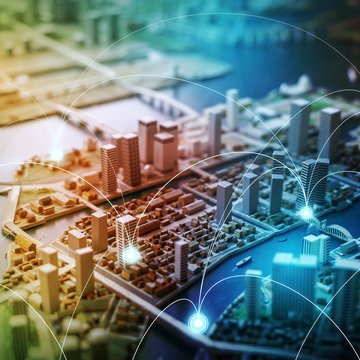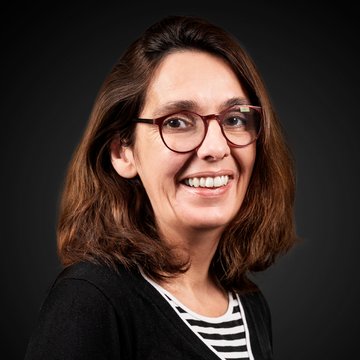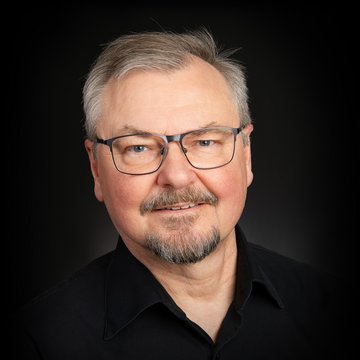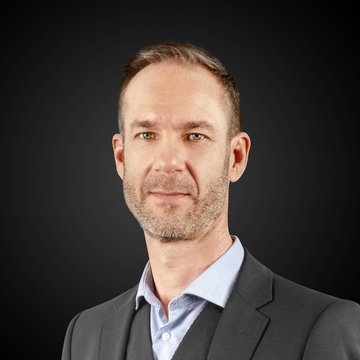For City Life Beyond Borders
SMART CITIES ARE FAR MORE THAN JUST A VISION. WITH SENSORS AND OPTICAL TRANSMISSION TECHNOLOGY, WE ARE MAKING TODAY’S CITIES FIT FOR THEIR JOURNEY INTO THE HIGHLY INTERCONNECTED FUTURE.
The City of Tomorrow
MORE SUSTAINABLE AND LIVABLE
Urban development is always a challenge because road and utility networks have often grown organically over centuries. Digital networking was not envisaged at the time that this growth initially began. How far a city is on the way to becoming a smart city largely depends on how courageously the competent authorities act. At Stadtwerke München (Munich’s municipal utility company), Dr. Jörg Ochs and his team are not afraid to break new ground and think outside the box.
Smart city” – This magic word triggers wild associations: Even the most grounded contemporaries can at least conjure up ideas of automated infrastructures that relieve residents of many tedious tasks. No one has to put out the trash can or sweep the sidewalk anymore. The automated city will take care of that by itself, and citizens will actually only have to leave their homes to pursue pleasant recreational activities in the crystal-clear air. This idea will probably remain science fiction for a long time. Nevertheless, we cannot ignore the fascination of the topic, even if we are only approaching the goal with tiny steps.
All Cities Want to Become Smart
Ultimately, the smart city is based on the same fundamental idea as Industry 4.0 – just on a larger scale. Both ideas rise or fall with the networking infrastructure. Digitization and new technologies should lead to sustainable urban development that makes efficient use of ecological and social improvement potential. In the end, the overall concept encompasses as many areas of life as possible. This idea is so forward thinking that cities across nations, states, and cultures are working feverishly to expand their digital structures. One of the most well-known smart city developments is currently the new Egyptian administrative capital to the east of Cairo; the South Korean test-tube city of New Songdo City boasts the title of “smartest city in the world.”
Old Networks – New Networks
Many of these flagship projects were planned as smart cities on the drawing board. This, of course, makes things much easier because the foundations for the interconnected infrastructures can be laid before the construction of the first building even begins. Things look a little more difficult for most European cities. “The oldest parts of Munich’s water network are over 200 years old, and since then it has grown organically with the city,” says Dr. Jörg Ochs, head of IT at Stadtwerke München GmbH (Munich’s municipal utility company) and the driving force behind many digitization and network expansion projects in the Bavarian capital. “The situation is similar with the power grid. Our main challenge is therefore to make existing infrastructures ‘smart.’”

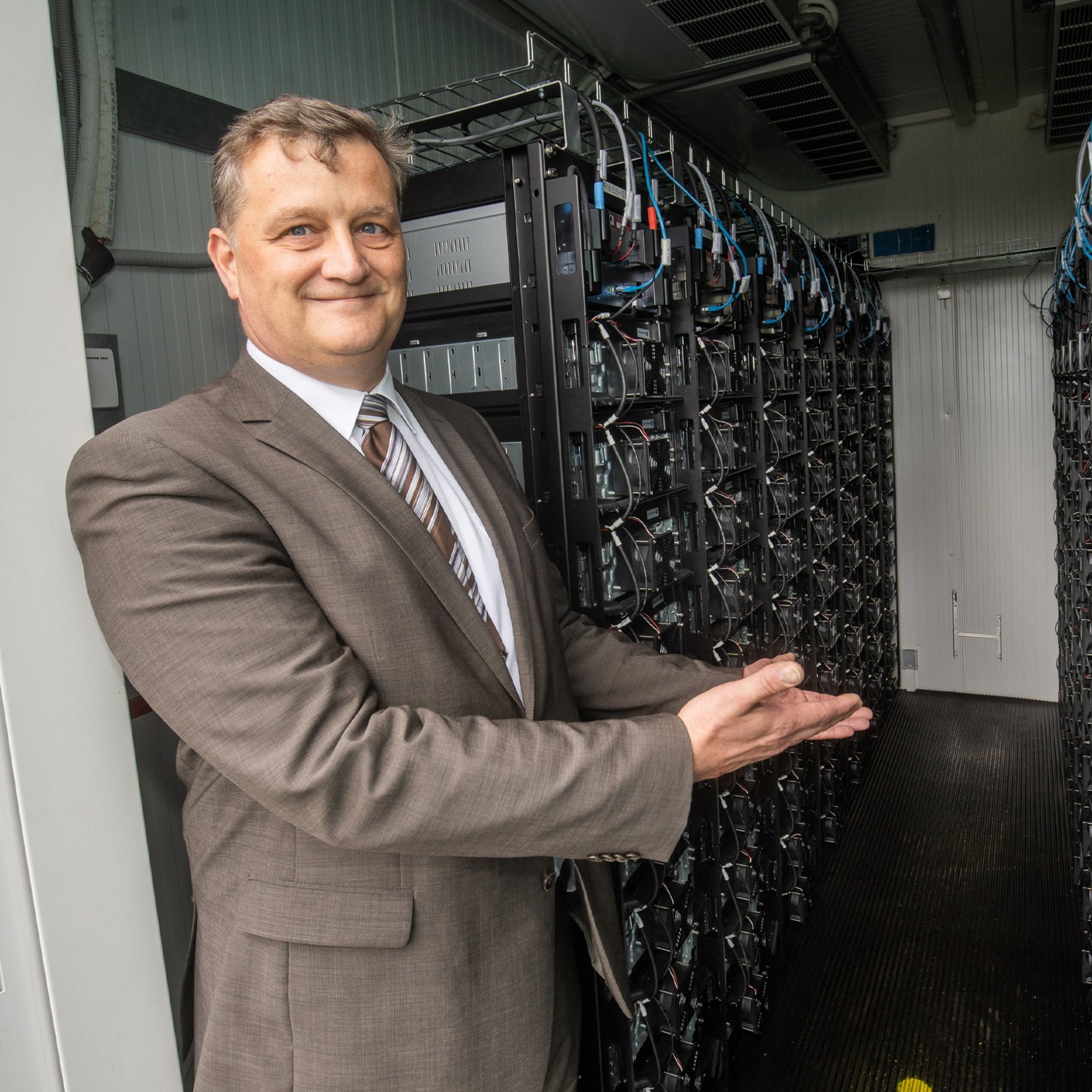
“THE CHALLENGE IS BRINGING TWO WORLDS TOGETHER”
Dr. Jörg Ochs
Head of information technology at Stadtwerke München (SWM) (Munich’s municipal utility company)
Sensors & City Infrastructure
Monitoring and Communication

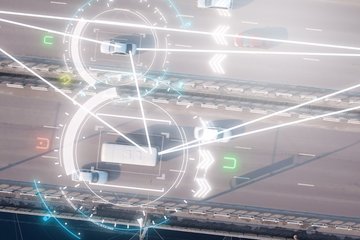
How Do Sensors Communicate?
The backbone of all digital solutions is generally considered to be the fiber optic network. When it came to expanding the smart structures, Dr. Ochs was nevertheless surprised: “Fiber optics are important for digitization, but they are not the network of the smart city. I have one problem in particular here. I want to have as many measurement readings as possible, but a power connection is not available on site for a fiber optic or radio modem to transmit the data from the sensors. So, for this level of communication, we decided to use a LoRaWAN. This is a very energy-efficient radio technology. That means that it is possible to operate a sensor for two to five years with one battery. In the meantime, we have distributed around 50 LoRa base stations in the city and can thus enter the internet of things. Of course, the base stations are then connected back to the fiber optic network.”
Listening for Leaks
A good example of the use of networked sensors is the water network, which is the oldest network in the city and has around 3,200 km of pipes. It is also very complex compared to other supply networks: there are different pressure zones to consider, and the water can change its direction of flow depending on consumption. Over the centuries, weak points have shown up in the pipes time and again, and water has sept away unnoticed into Munich’s gravel-rich soil. “Water is a valuable resource,” Dr. Ochs knows. “That’s why we have to track down every leak and repair it quickly.” In outdoor areas, the average consumption for certain zones can be determined with flow meters. It is important that these so-called “water balance zones” have only a few points of connection with the neighboring network. This is not possible in the city center because the network is too heavily meshed there. The municipal utility company tested a new strategy together with the Ludwig Maximilian University of Munich. They “listened” to the network with microphone sensors to “eavesdrop” on leaks. An artificial intelligence evaluated the data from this round-the-clock monitoring and was thus able to reliably detect and localize leaks.

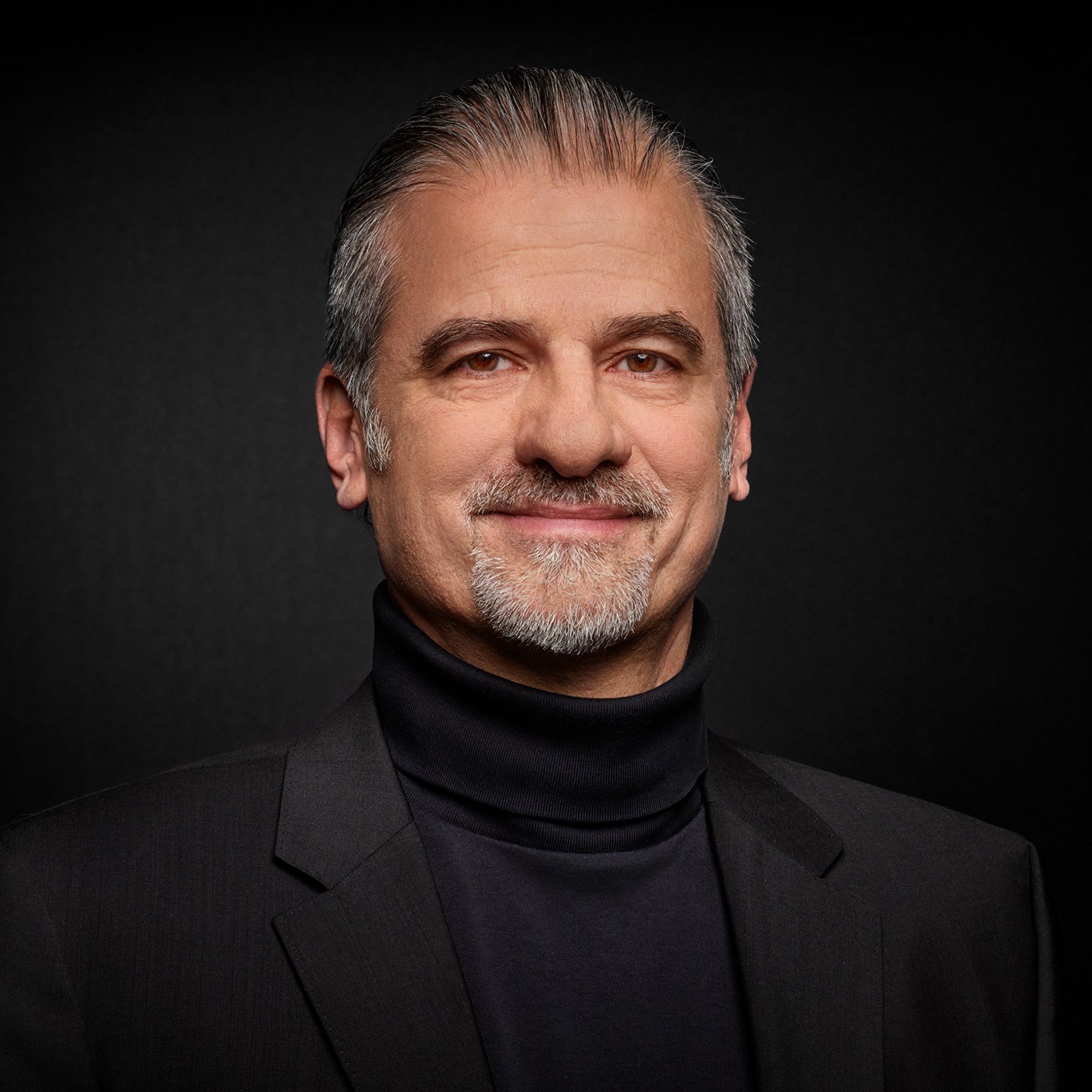
“HIGH-SPEED NETWORKS ARE THE BACKBONE OF THE SMART CITY.”
Dr. Andreas Hornsteiner
Head of Fiber Optics
Lidar Steering
Sensors in dialogue
Will LiDAR Soon Be Regulating Traffic?
“Munich is growing extremely fast – by 20,000 inhabitants a year. And we don’t just have to supply them with energy, but mobility is also becoming a big issue,” says Dr. Ochs. “The Munich metropolitan region currently has around six million inhabitants and a large proportion of them are drawn to Munich to work.” Traffic guidance, therefore, already plays an important role in these considerations. Intelligent, networked guidance systems are being used to direct the masses of cars in such a way that traffic jams and dangerous situations can be avoided. Optical technology could play an important role here.
“Most people are familiar with LiDAR systems in cars, but they can, of course, be used just as well to observe and analyze the flow of traffic from the outside,” says our LiDAR expert Winfried Reeb. That’s exactly what the city of Munich has done in a pilot project, equipping a busy intersection with a LiDAR system. The advantage: This technology captures 3D data from all road users – whether cars, pedestrians, or cyclists. It is even able to distinguish different types of vehicles (cars, trucks, vans). This allows planners to accurately analyze what is happening at the intersection in real time. If many of these LiDAR systems are used in a smart network at different intersections, it may soon be possible to manage road traffic in a predictive manner.


“IT’S ALL ABOUT INFRASTRUCTURE, SUSTAINABLE ENERGY SUPPLY, CITY-FRIENDLY MOBILITY, AND INFORMATION AND COMMUNICATION TECHNOLOGY.”
Stadtwerke München (Munich's Municipal Utility Company)
Trying It Out in One District
To try out all his ideas for the Smart Munich of tomorrow, Dr. Ochs has an entire district at his disposal. The so-called M.Quartier is currently being built on an area of 460,000 m² and is 100% owned by the municipal utility company. “In this district, I don't have to coordinate with any other parties involved,” the smart city expert is pleased to say. “There I have not only office buildings but also apartments, retail stores, and even an event location. It’s like a really small city that I can play with. One important topic for us was heat recovery, for example, but we’ve also tried out a lot in terms of digitalization – from public hotspots to indoor navigation to smart streetlights.”
It Has to Happen Faster!
For Dr. Ochs, the smart city is also, above all, an innovation driver: “With every project I've tackled so far, they've said: ‘If we start now, we’ll be done in 50 years.’ But I still want to see everything evolve myself. So, we have to come up with new solutions that will enable us to meet these challenges more quickly. We are always at the forefront. And we have already been looking at quantum computing and rebuilding our IT into an agile product-centric model.”

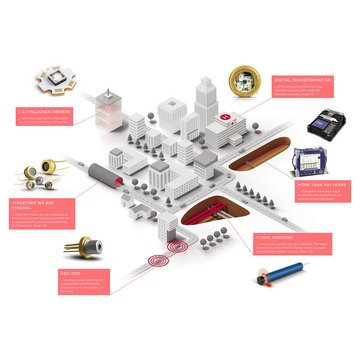
In the smart city, many different areas of life are interconnected via IoT. LASER COMPONENTS has the building blocks for a successful smart network.

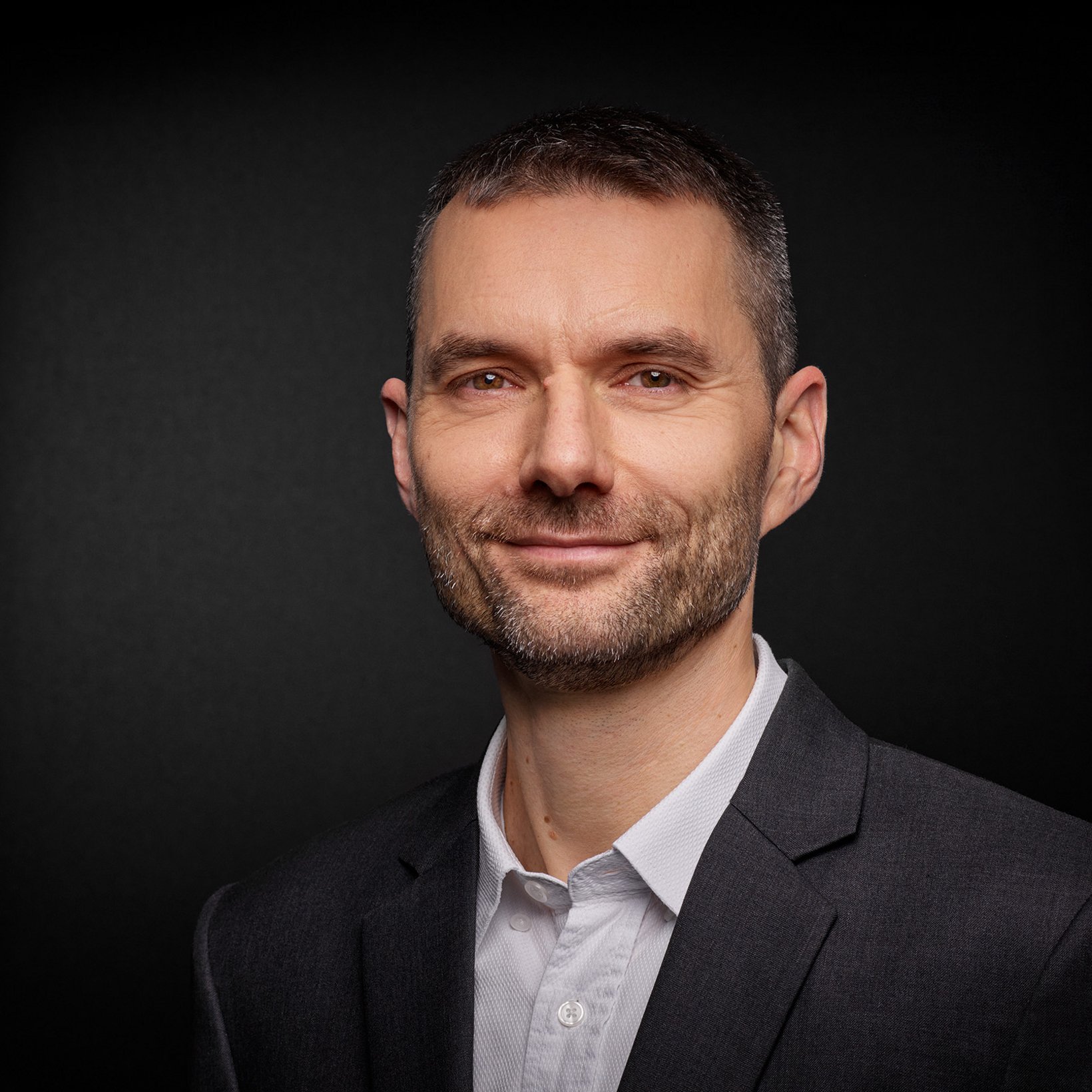
“EXHAUST GAS EMISSION MEASUREMENT, LIDAR, MACHINE VISION: THERE ISN’T AN OPTICAL MEASUREMENT SYSTEM OUT THERE FOR WHICH WE DON’T ALREADY HAVE SUITABLE COMPONENTS.”
SVEN SCHREIBER
- He really knows his stuff: As head of sales at LASER COMPONENTS Germany, he has an overview of the diverse product range.

